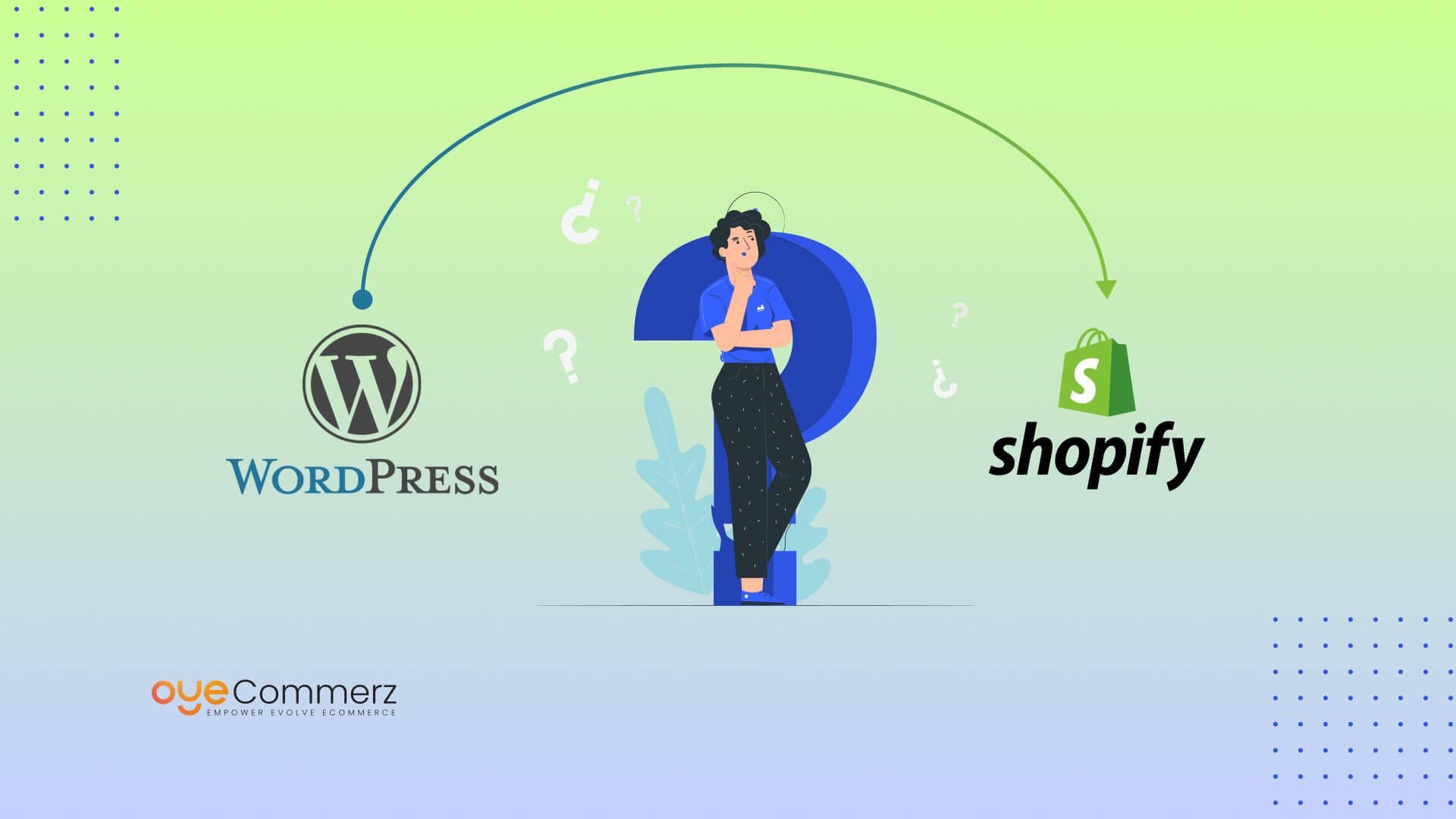Transitioning from WP to Shopify is an exciting step in optimizing your online store operations. As companies grow, selecting a platform that supports growth potential, UX, and customization becomes crucial. Shopify is widely recognized as a favorite for e-commerce professionals, offering superior flexibility, data protection, and ease of use. In this guide, we will delve into the transformative impact of this migration, discuss the benefits, and share actionable steps to facilitate a seamless move.
1. Why Switch from WordPress to Shopify?
The combination of WordPress and WooCommerce, continues to support countless e-commerce platforms. However, as businesses scale, issues like plugin dependency, data risks, and technical complexities can hinder progress. Shopify, designed explicitly for digital retail, eliminates these concerns with an comprehensive, user-friendly platform. Statistics supports this shift—Shopify powers over 4.4 million stores globally, with a documented 10% boost to sales performance for numerous merchants after migration.
2. Key Benefits of Shopify for E-commerce Success
Shopify’s robust ecosystem is tailored for expanding businesses. Its notable features include:
- Seamless Customization: Shopify provides over 80 professionally designed themes.
- Built-in Features: Capabilities such as Shopify Payments and built-in SEO save time and effort.
- Global Reach: Currency versatility and regional customization enable businesses to expand internationally.
Additionally, Shopify boasts an availability percentage of 99.98%, guaranteeing your website is always operational.
3. Getting Ready for Your WordPress-to-Shopify Transition
Before migrating, assess your existing setup. Review inventory details, customer details, and SEO performance. Tools like Shopify’s Migration Kit or external tools help ease the transition. Develop a comprehensive plan, ensuring all assets—item details, images, and articles—are ready for seamless import.
4. Data Migration: A Critical Step
Data migration is a cornerstone of a smooth transition. When moving from WordPress to Shopify, focus on:
- Product Information: SKU, item summaries, and groupings.
- Client Information: Emails, order history, and custom fields.
- SEO Optimization: Preserve meta tags, URLs, and forwarding paths to maintain search rankings.
Leverage tools such as LitExtension to facilitate seamless migration while reducing mistakes.
5. Customizing Your Shopify Store
Post-migration, customizing your Shopify store helps it reflects your business identity. Take advantage of Shopify’s intuitive page builder to design pages effortlessly. Shopify's templates are optimized for all devices, ensuring a smooth user experience across devices—a critical factor, given 74% of online shopping comes from mobile visitors.
6. How to Protect Your SEO Rankings When Switching Platforms
SEO is vital for maintaining your online presence during migration. Shopify excels in SEO with organized link formatting, built-in optimization tools, and smooth content management. Ensure:
- Implement 301 redirects for existing links.
- Optimize new pages with keyword-rich content.
- Leverage plugins like Plug in SEO Shopify migration experts to monitor performance after the switch.
7. Essential Tests After Migrating to Shopify
Once the migration is complete, run detailed checks.
Check: - Website speed (Shopify boasts faster speeds in contrast with WordPress).
- Payment integration reliability and transaction flow.
- Mobile responsiveness.
Testing ensures your store provides a smooth shopping journey from day one.
8. Real-Life Success Story
An example of effective platform switching is Gymshark, a sportswear company that moved to Shopify. After the switch, the company saw a 60% increase in mobile sales and reduced site downtime. This showcases the capabilities of Shopify in enhancing online business success.
9. Challenges and Solutions
Migration is not without obstacles, such as information accuracy and adjusting tailored features. However, Shopify’s robust support and external professionals make overcoming these hurdles manageable. Partnering with experienced Shopify developers helps guarantee a trouble-free transition.
10. Starting Your Journey with Shopify
Migrating from WordPress to Shopify represents a strategic decision to e-commerce. By focusing on growth, streamlining operations, and improving buyer satisfaction, Shopify empowers businesses to thrive in competitive markets.
Conclusion
Transitioning from WP to Shopify offers a smart solution that can greatly enhance your online business performance. E-commerce platform migration With a well-structured strategy, the appropriate resources, and professional guidance, you can achieve new growth opportunities.
Ready to make the leap? Let’s discuss how our Shopify migration services can transform your e-commerce platform. Get in touch today, or ask yourself: Can your business afford to miss out on Shopify’s growth potential?
